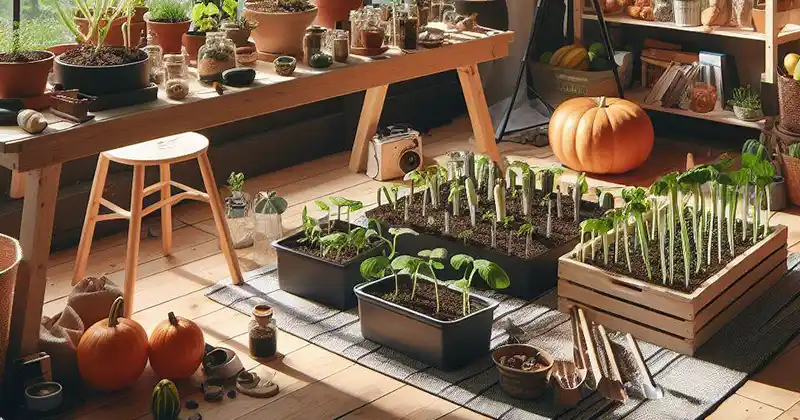
Welcome to our guide on how to grow pumpkins at home in containers. If you have limited space but still want to enjoy the satisfaction of growing your own pumpkins, this is the perfect solution for you. We’ll walk you through the process step by step, so you can have a bountiful harvest right in your backyard!
Choosing the Right Container
When it comes to growing pumpkins in containers, size matters. Opt for a container that’s at least 15 gallons in volume. This will give the pumpkin plant’s roots enough space to spread and grow. Make sure the container is at least 18 inches deep to accommodate the deep root system of pumpkin plants. And don’t forget about drainage! Drill some holes in the bottom of the container to prevent waterlogging.
Selecting the Right Pumpkin Variety
Not all pumpkins are created equal when it comes to container gardening. Look for compact or bush varieties like ‘Small Sugar,’ ‘Baby Boo,’ or ‘Jack Be Little.’ These varieties are perfectly suited for growing in containers. Consider the size of your container and choose a variety that won’t outgrow it.
Soil and Planting
Having the right soil is essential for the success of your pumpkin plants. Use a rich, well-draining potting mix that contains organic matter. You can also mix in some compost or aged manure for added nutrients. When planting the seeds, sow 2-3 pumpkin seeds about 1 inch deep in the center of the container. Once they sprout, thin them out and keep the healthiest seedling. If you’re planting multiple seeds, make sure to space them at least 18-24 inches apart.
Watering and Sunlight
Pumpkins need consistent moisture to grow, but be careful not to overwater them. Keep the soil moist, but not waterlogged. Allow the soil to dry slightly between waterings. Besides water, pumpkins also need plenty of sunlight. Make sure your container is placed in a spot that receives at least 6-8 hours of sunlight every day. This will ensure optimal growth and a bountiful harvest.
Care and Maintenance
To support your growing pumpkin plant, place a trellis or support structure near the container. As the vines grow, gently train them to climb the support. This will provide better airflow and prevent rot. Fertilize your pumpkin plant every 2-3 weeks with a balanced, slow-release fertilizer or a diluted liquid fertilizer. Don’t be afraid to trim excess foliage and smaller fruits to redirect the plant’s energy towards the main pumpkin.
Pest and Disease Control
Regularly inspect your pumpkin plant for pests like aphids, squash bugs, or cucumber beetles. If you notice any, use organic insecticidal soap or neem oil to control them. Keep an eye out for powdery mildew, as it can affect pumpkins. Ensure good airflow around the plant and use fungicides if needed.
Harvesting
Patience is key when it comes to harvesting pumpkins. Depending on the variety, pumpkins typically take 75-100 days to mature. Look for signs of maturity such as a deep, consistent color, hard rind, and dried stem. When you tap on the pumpkin, it should sound hollow. Use pruning shears to cut the pumpkin from the vine, leaving a few inches of stem attached. Now, you can proudly display your homegrown pumpkins!
Growing pumpkins in containers may require some attention to detail, but it’s definitely worth it. With the right care and maintenance, you can enjoy the rewarding experience of harvesting your own pumpkins at home, even if you have limited space. Remember, gardening is a journey of learning and discovery. Don’t be discouraged by setbacks – each attempt will provide valuable insights for future success. Happy pumpkin growing!








